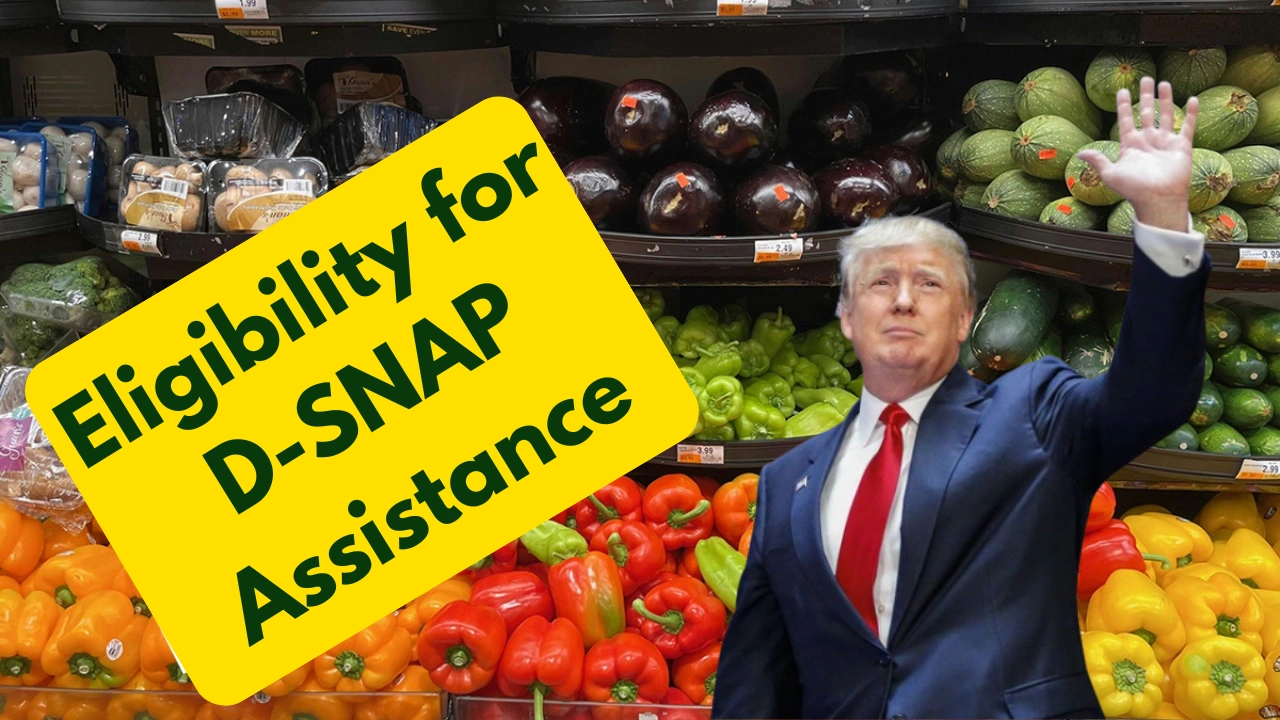Natural disasters like Hurricane Helene can devastate communities, leaving families grappling with financial strain, damaged homes, and disrupted lives. To help those affected, the U.S. Department of Agriculture (USDA) has activated the Disaster Supplemental Nutrition Assistance Program (D-SNAP), offering temporary food assistance to eligible households facing disaster-related hardships.
Whether you’ve lost income, suffered property damage, or encountered unexpected disaster expenses, this guide will explain D-SNAP’s eligibility criteria, application process, and benefits to help you access this crucial resource.
Understanding D-SNAP
D-SNAP is an emergency food assistance program designed to support households in federally declared disaster areas. Unlike regular SNAP, which is income-based, D-SNAP focuses on disaster-related losses and temporary hardships.
Key features include:
- Simplified Eligibility: Focused on disaster-specific losses.
- Temporary Benefits: Typically offered for one month.
- Rapid Assistance: Applications are processed quickly to provide immediate relief.
Why D-SNAP Matters
When disasters strike, families often face food insecurity due to income loss, property damage, and unexpected expenses. D-SNAP ensures affected households can access essential groceries, helping them focus on recovery.
Example: Maria, a single mother from Georgia, temporarily lost her job due to Hurricane Helene. Her family faced additional costs for evacuation and home repairs. Through D-SNAP, Maria received $504 in benefits, allowing her to buy groceries while she stabilized her situation.
Eligibility for D-SNAP
- Residency
You must live or work in a FEMA-declared disaster area at the time of the disaster.
Tip: Visit FEMA’s website to verify your county’s disaster status.
सम्बंधित ख़बरें
- Disaster-Related Losses
Applicants must show at least one qualifying expense, such as:
- Home or property damage
- Evacuation or shelter costs
- Lost or spoiled food due to power outages
- Reduced income from job disruptions
- Extra costs for repairs, fuel, or medical expenses
- Income Requirements
Even if you don’t qualify for regular SNAP, disaster-related expenses may reduce your net income, making you eligible for D-SNAP. States often provide guidelines or calculators to help you determine eligibility.
How to Apply for D-SNAP
Step-by-Step Guide:
- Pre-Register (if available): Some states, like Georgia and Florida, offer online pre-registration.
- Gather Documents:
- ID (e.g., driver’s license or passport)
- Proof of residency (e.g., utility bill or lease)
- Disaster expense receipts (e.g., hotel stays, repairs)
- Income verification (e.g., pay stubs or bank statements)
- Submit Your Application:
- Online: Through state portals.
- In-Person: At disaster relief or application centers.
- Phone: Some states allow telephone applications.
- Complete an Interview: Most states require a brief interview to verify eligibility.
- Receive Benefits: Approved applicants get benefits loaded onto an EBT card for immediate use at authorized retailers.
States Implementing D-SNAP for Hurricane Helene
- Georgia:
Phase 4 applications (November 18–23, 2024) include Laurens, Telfair, and Wayne counties. Visit the Georgia DHS website for updates.
- Florida:
Applications are phased by county. Real-time updates are available on the Florida DCF website.
- North Carolina:
Over 164,000 people benefited during Phase 1, covering 25 counties. Visit NCDHHS for details on upcoming phases.
Challenges and Tips for Applicants
- Short Deadlines: Application windows often last 7–10 days. Tip: Apply as soon as your state announces the program.
- Missing Documents: If you’ve lost records, local disaster relief organizations can assist in replacements.
- High Demand: States may face processing delays. Tip: Pre-register online to save time.
What You Can Purchase with D-SNAP
Benefits are issued on EBT cards and can be used for:
- Fresh produce, dairy, and meats
- Bread, cereals, and canned goods
- Non-alcoholic beverages
During disaster periods, temporary exemptions may allow hot foods or ready-to-eat meals, which are usually restricted under SNAP.
Frequently Asked Questions
- Can current SNAP recipients apply for D-SNAP?
No. However, if your monthly SNAP benefits are below the maximum allotment, you may qualify for a supplement.
- Are non-citizens eligible for D-SNAP?
Certain non-citizens, like lawful permanent residents, may qualify. State-specific rules apply.
- How quickly are benefits issued?
Approved applicants typically receive benefits within 72 hours.
- Can I apply after the deadline?
Deadlines are strict, but exceptions may be possible. Contact your state agency for guidance.
D-SNAP offers a lifeline to families recovering from Hurricane Helene, providing vital food assistance during challenging times. Don’t wait—apply today to ensure you have the support you need. For updates, visit the USDA or your state’s disaster relief website.



